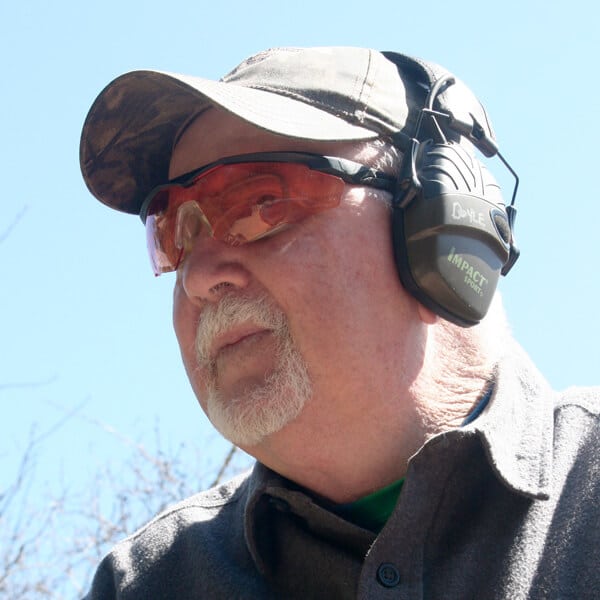How Do I Pick a Holster?
August 30th, 2020
6 minute read
If you have opted to carry a concealed handgun, you have no doubt given this decision a great deal of thought. Hopefully, at the end of this process, you have settled on a firearm that you can shoot to a high standard effectively conceal, and it fits your lifestyle. While coming up with the right gun is a very big part of the picture, matching it up with the optimum holster is every bit as important.
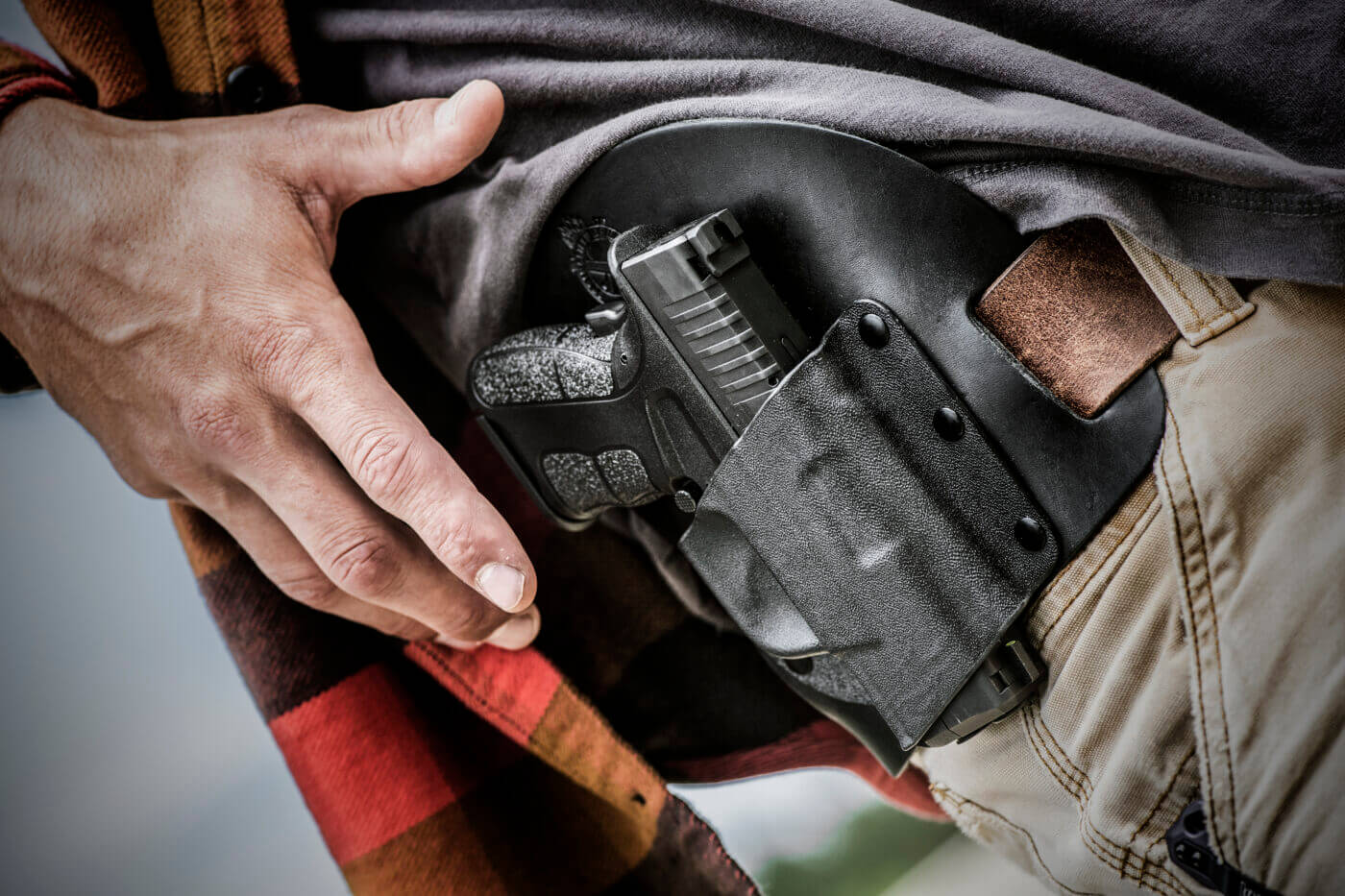
For the casual plinker or target shooter, any holster that will secure the handgun when not in use will do the trick. Finding the right holster to go discreetly armed in polite society requires considerably more thought. It has been my observation that many cops and armed citizens have no reservations about paying top dollar for a pistol, yet will cut corners and take whatever is readily available in a holster.
Many years ago, a famous New York City clothier’s slogan was “select, don’t settle”, and today those words ring true when it comes to holster selection. Without too much trouble you can find a concealment holster optimized for just about any popular handgun. Manufacturers such as DeSantis, Galco, and Safariland turn out some great products at a fair price. For the more discriminating user, a small cottage industry of custom holster makers turns out a wide variety of designs suitable for just about every conceivable need.
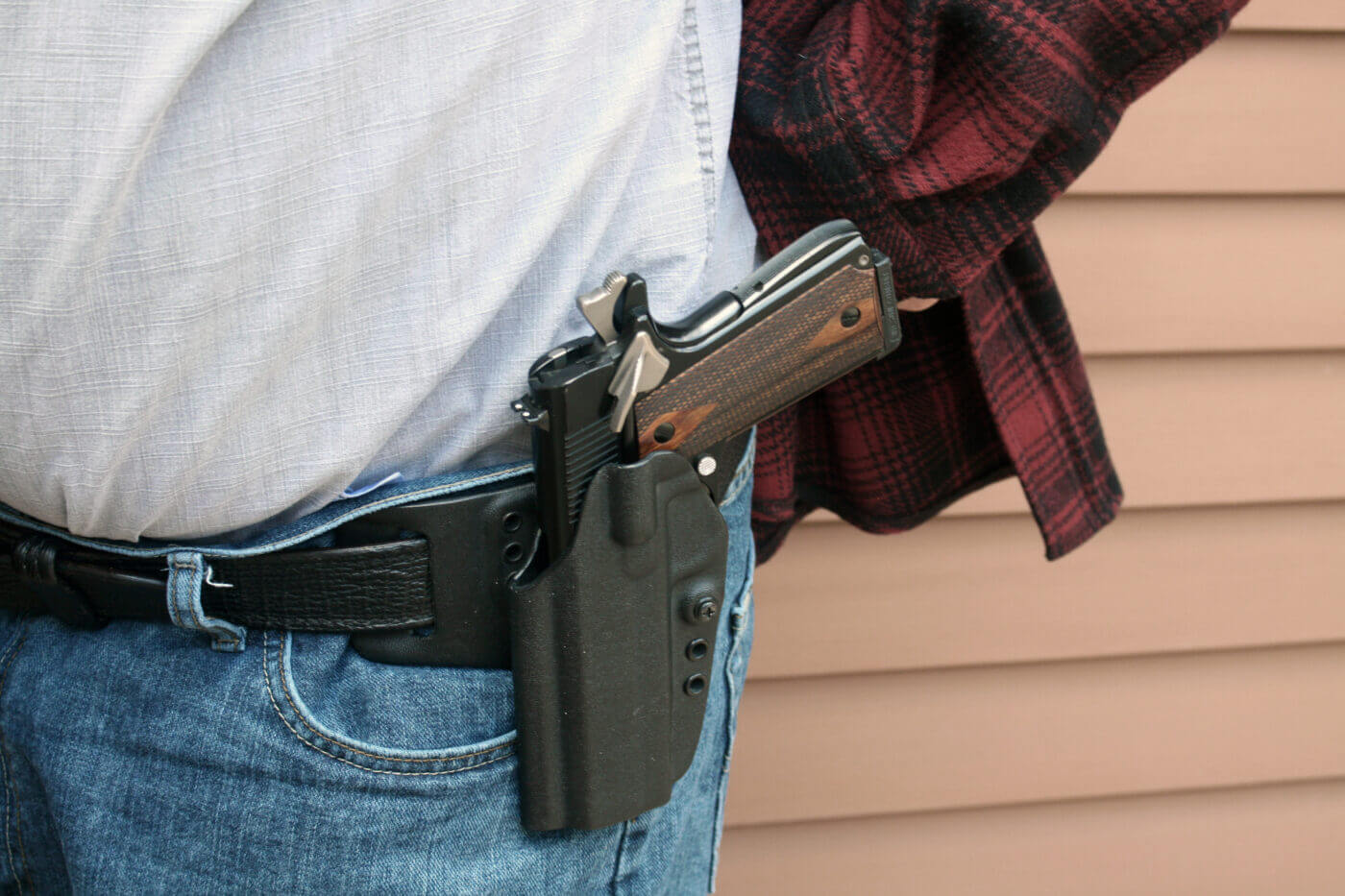
What You Need
When it comes to selecting a concealed carry holster, there are a number of qualities that are pretty much non-negotiable. They include comfort, accessibility, security and the fact that it should contribute to hiding the gun. That last quality is often a mixed bag, as a holster that might work under a heavy winter parka will stand out like the proverbial sore thumb under an untucked shirt. With a well-designed concealment holster, you can hide a full-size service pistol under light, casual clothing.
Concealment holsters fall into one of two categories, and they include general use and specialized applications. General use holsters are worn on the belt and are, without question, the most efficient designs. The ability to quickly draw the holstered gun in close quarters makes belt carry the best choice. Unfortunately, belt carry is outside the realm of possibility for many users. Shoulder, ankle and pocket holsters are examples that fall into the more specialized category and while useful, have some drawbacks. In some instances, however, they may be the only viable solution.
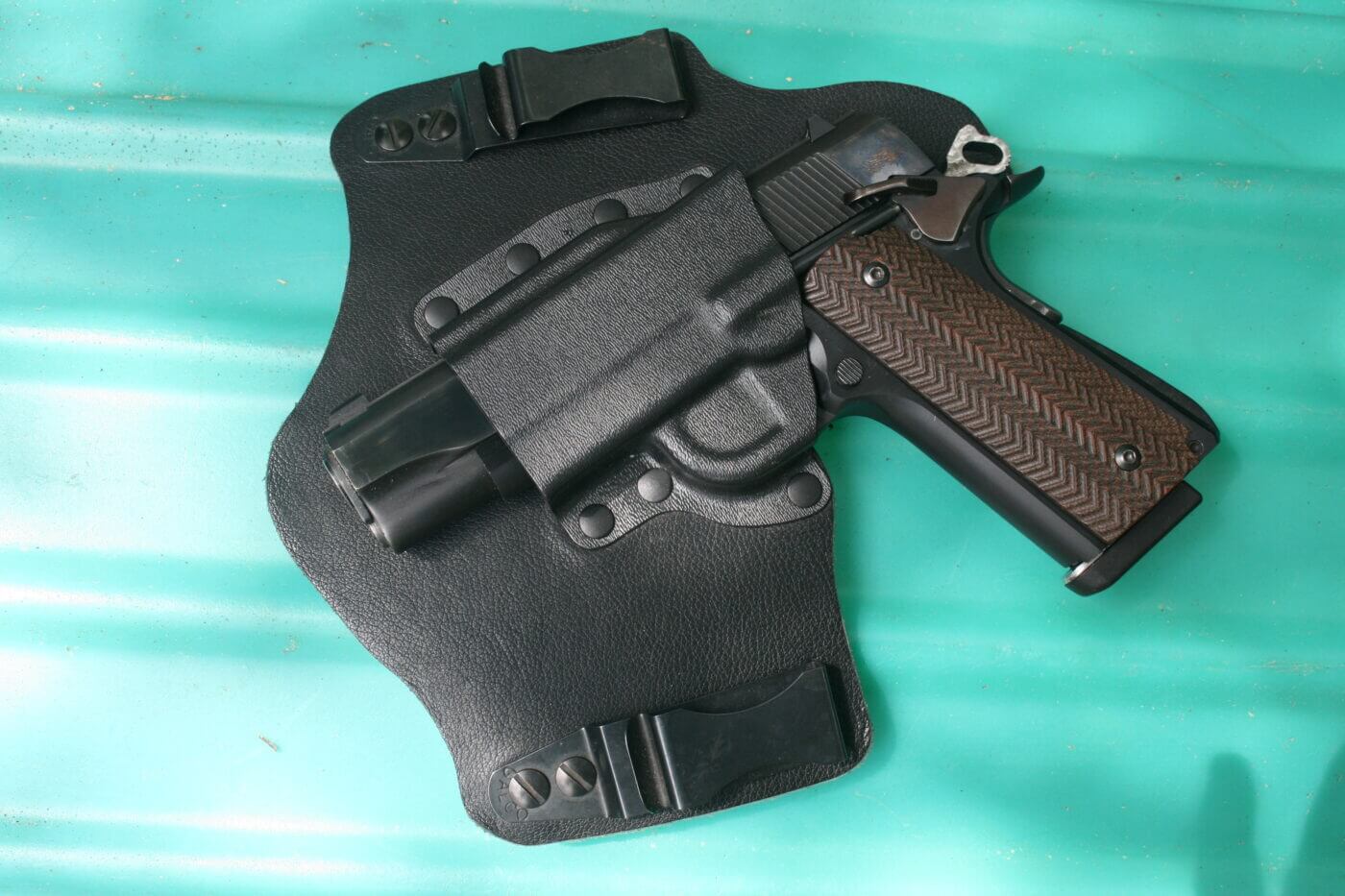
A belt holster worn on the shooter’s strong side will get your pistol into action faster than any other carry position. Most of the time, I favor some sort of high riding, belt scabbard or pancake design worn outside the waistband. Since my wardrobe consists of loose, casual clothing, I can get away with this setup three seasons of the year. But once the mercury rises and light clothing is the order of the day, I go to an inside-the-waistband (IWB) holster to maintain a low profile.
Modern concealment holsters can be rendered from leather, Kydex or other synthetic materials. A finely crafted leather holster can be pleasing to the eye as well as functional. Kydex is a super-tough thermoplastic that is impervious to the elements, sweat and chemicals and can be molded to the exact shape of the gun. Security in a concealment holster can be achieved by precise fit or an active measure such as a thumb break or lever. No matter what route you take, the ability to get a full firing grip as soon as the hand comes into contact with the gun is especially important.
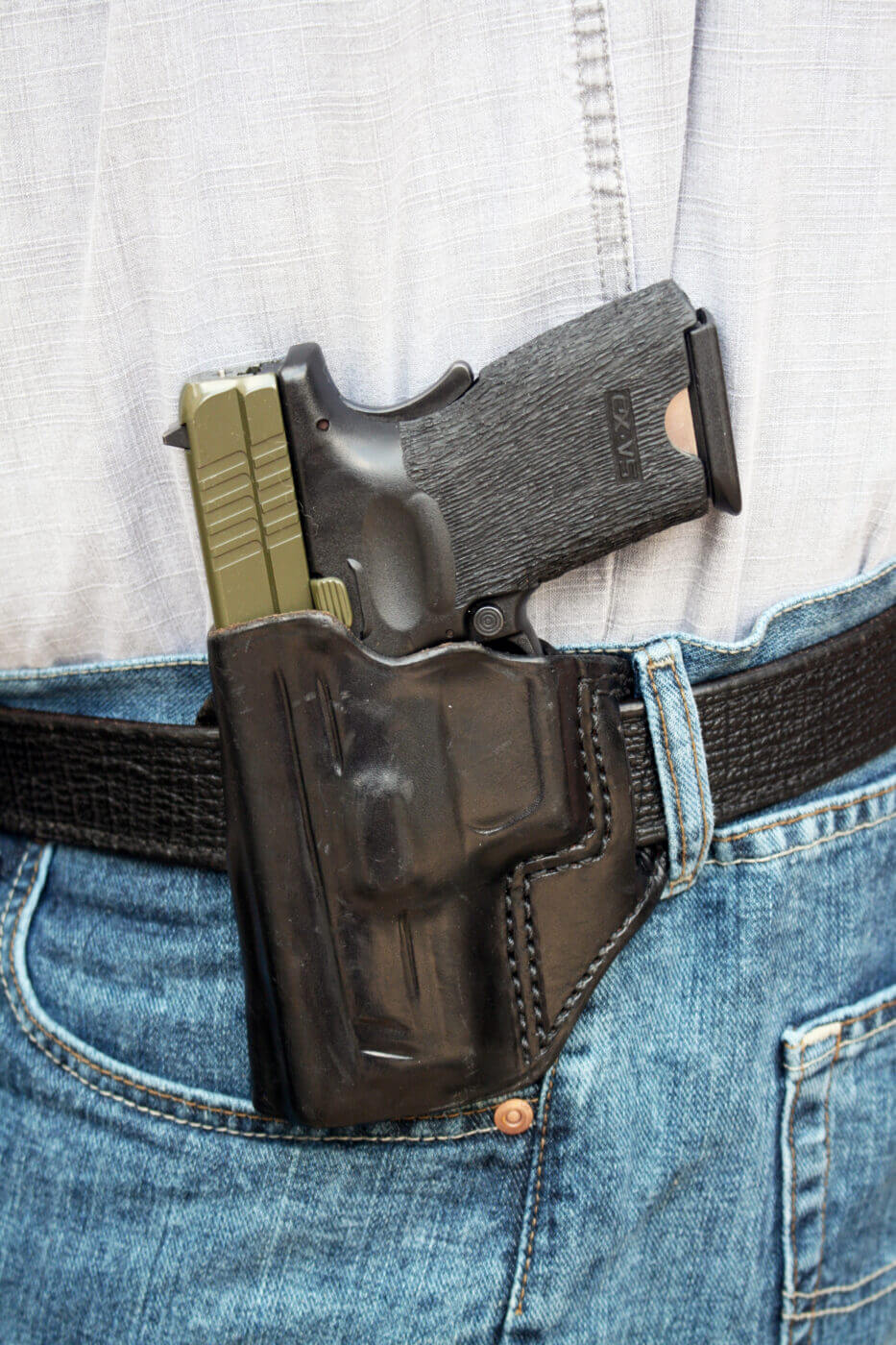
Cant Think
One quality rarely discussed when it comes to holster selection is rake or cant. Most off-the-rack concealment holsters are designed with an FBI rake where the butt is forward and the muzzle is angled to the rear. It does indeed help concealing the gun, but at the expense of an efficient draw stroke. This is especially true when you take into consideration that many of these holsters are designed to ride high on the belt. When drawing, the user must bend the wrist causing the elbow to flare out to the side. Very often, women have an especially difficult time efficiently drawing from an FBI rake holster.
Alternatives include a neutral rake or even a forward rake with the muzzle forward and the butt slightly angled to the rear. I find my draw times are measurably faster with these types of holsters, but concealment is more challenging. Yet another belt option is crossdraw, with the gun positioned on the support side. Should you go the crossdraw route, the holster should be positioned just to the side of body centerline (1 o’clock for righties) for ready access. Crossdraw still makes a lot of sense for people who spend a good part of their day in a seated position.
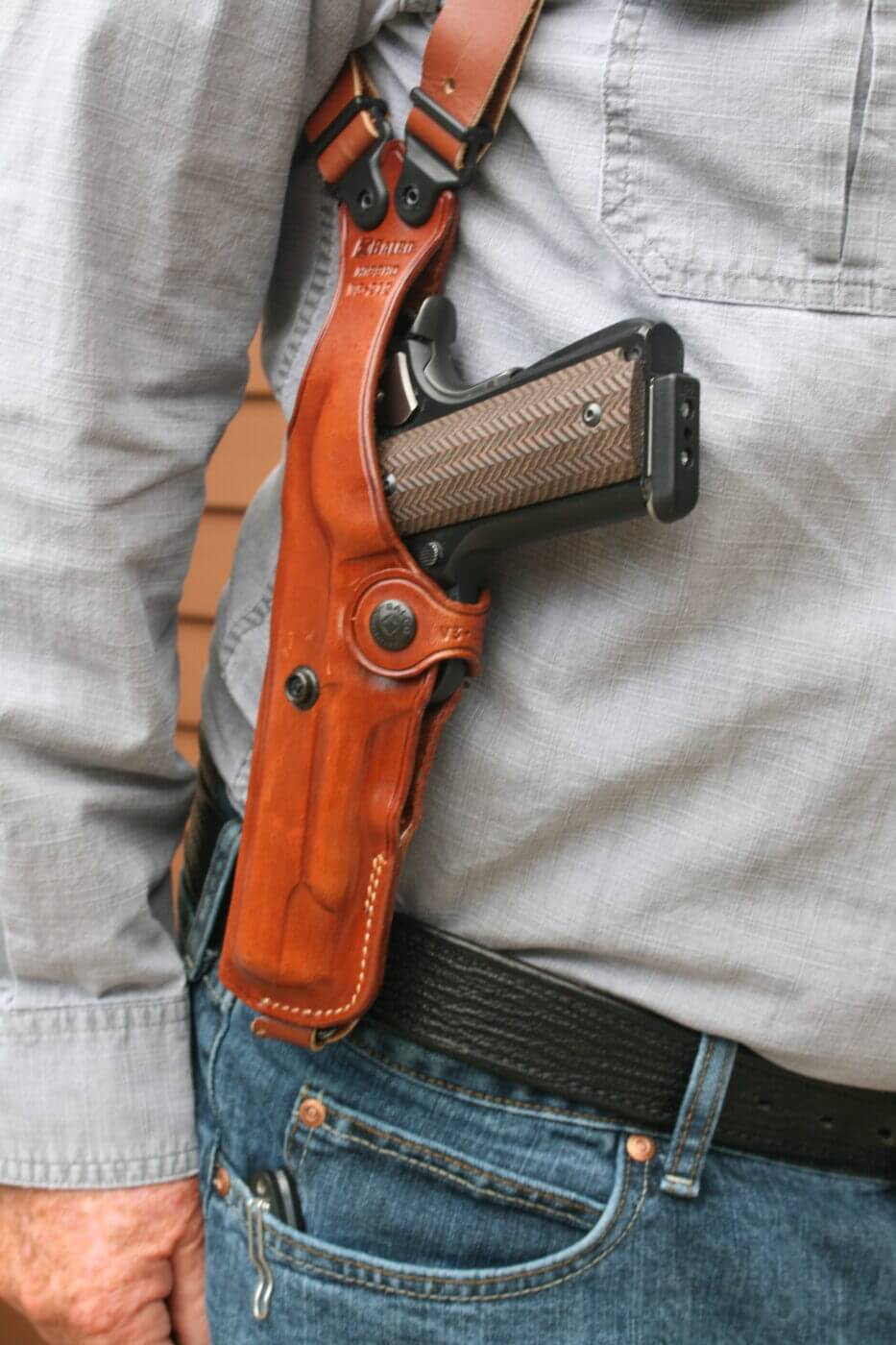
Striking a Balance
IWB carry strikes the ideal balance between efficiency and discretion, and with a light covering garment one can conceal something as big as a full-size 1911 service pistol. With traditional IWB carry, the gun is positioned just behind the strong side hip.
Of late, appendix inside the waistband (AIWB) carry has come on strong and there is much to be said for it. With AIWB carry, the holstered weapon is tucked down the front of the pants which makes it very hard to detect. With either traditional IWB or AIWB carry, user comfort will be the limiting factor. It’s also important to note that there are “tuckable” IWB holsters available where a loose-fitting shirt can be draped over the gun, eliminating the need for a covering garment.
Shoulder holsters, either vertical or horizontal, are a sometimes solution. Obviously, a jacket or coat will be required. Since grappling with an adversary is more likely than shooting, one of my concerns with shoulder rigs is weapon retention. Ankle carry is very discreet, but quickly getting the gun into play is difficult, particularly in close quarters where most conflict occurs. A pocket holster may do the trick, but one is limited to a small, relatively light handgun. But if it comes down to a small gun or no gun, the choice is simple.
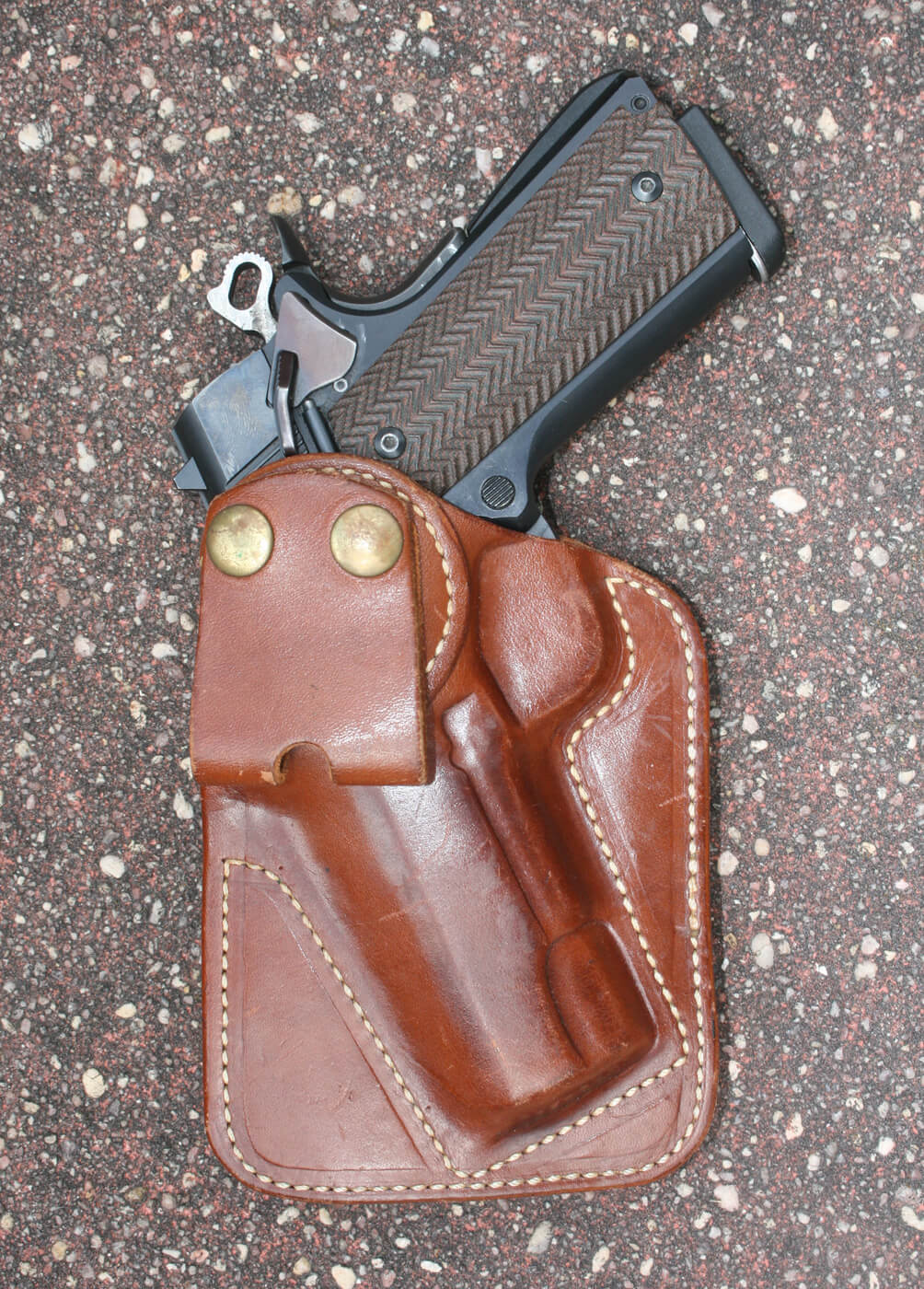
Conclusion
I strongly feel that belt carry is the way to go, and you want to consider adjusting your wardrobe to hide the holstered handgun. However, I recognize many armed citizens don’t have that flexibility. If that’s the case, one of the specialized options mentioned is a viable consideration. Whatever you choose, make sure you select the mode that best fits your specific requirements.
Editor’s Note: Please be sure to check out The Armory Life Forum, where you can comment about our daily articles, as well as just talk guns and gear. Click the “Go To Forum Thread” link below to jump in and discuss this article and much more!
Join the Discussion
Continue Reading
Did you enjoy this article?

 171
171





